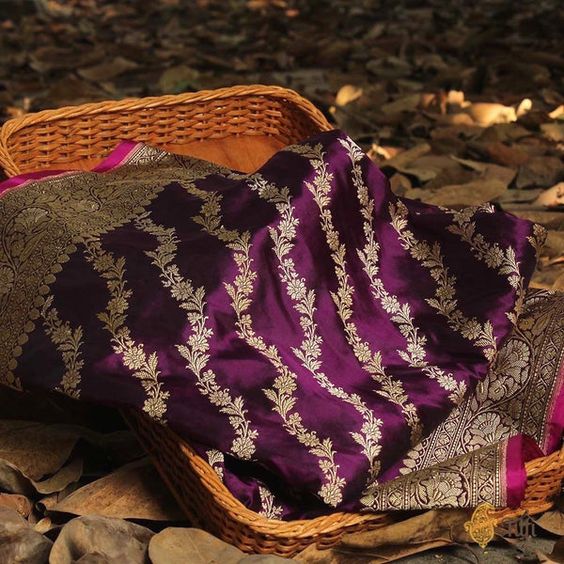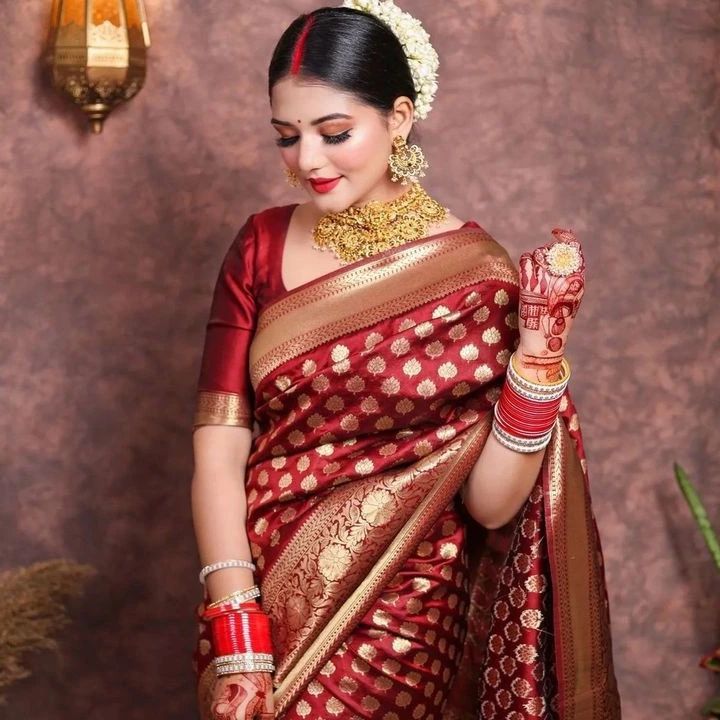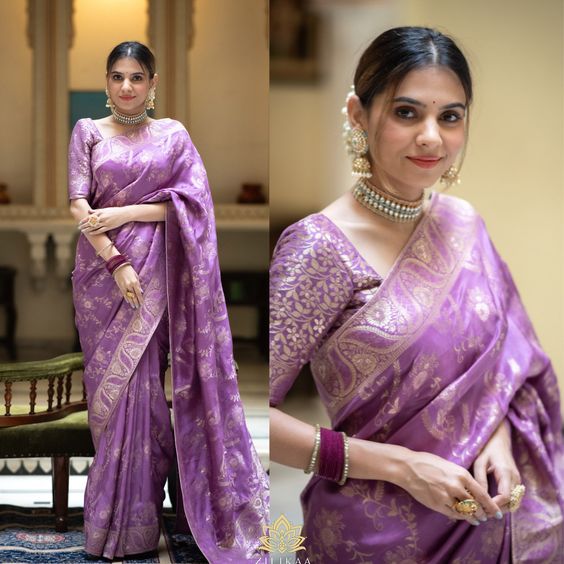
Simply the name “Banarasi saree” instantly evokes the images of aristocratic elegance and intricate designs. But the story of this renowned apparel goes far beyond its stunning visuals. It’s a narrative woven over centuries, reflecting the rich cultural tapestry of India itself. Today, let’s embark on a journey through time to explore how Evolution of Banarasi Saree Designs has happened Over the Decades, all rooted in the heart of Varanasi, the sacred city on the Ganges.
Roots in Varanasi: A Silk Legacy Unfolds
Varanasi, likewise called Banaras, has been a center of creative expression for centuries. Also, whispers of silk weaving customs can be mapped back to Vedic times, with the Rig Veda discussing ” Hiranya,” a material of gold thought to be comparable to the abundant zari job that specifies Banarasi sarees today.
Fast forward to the Mughal age (16th-19th centuries), and you’ll find a pivotal chapter in the history of Banarasi sarees. The Mughals, known for their appreciation of life’s finer things, played a crucial role in shaping the Banarasi saree as we know it today. The skilled craftsmen from Gujarat migrated to Varanasi, bringing their weaving expertise with them. This lovely blend of cultures resulted in a unique design that blended Mughal aesthetics with local craftsmanship.
Mughal emperors, referred to as patrons of the arts, fueled the demand for these exquisite sarees. Their love for intricate patterns and luxurious fabrics had a profound influence on the designs, solidifying Banarasi sarees as a symbol of royalty.

A Flourishing Canvas: From Floral Motifs to Geometric Delights
Visualize a saree decorated with blooming lotuses, delicate paisleys with majestic peacocks. These are just a few of the fascinating motifs that flourished on Banarasi sarees during the Mughal duration. The impact of Mughal style can also be seen in using ” jali ” work, intricate lattice patterns that added a touch of elegance to this beautiful apparel.
Nonetheless, the tale does not finish there. The British Raj (18th-20th centuries) likewise left its mark. Geometric patterns, a hallmark of British design, found their way into these beautiful sarees. This period also saw the intro of brand-new modern technologies enabling even more intricate and detailed weaving.

Beyond Tradition: A Modern Twist
Banarasi sarees have evolved over time, blending tradition with modernity. Designers today are mixing contemporary ideas with classic styles. They are making sarees lighter, perfect for everyday wear. They have introduced a wide range of colours alongside the traditional gold and silver zari work.
The saree itself is no longer restricted to wedding celebrations. The women today are choosing to wear the Banarasi saree for workplace, social celebrations, and also as a blend of Indo-Western clothing. The charm of the Banarasi saree hinges on its versatility. It can be as ageless and traditional as the wearer wishes or as modern-day and stylish as the wearer wishes.
A Legacy Woven in Every Thread
The Banarasi saree is more than just apparel; it’s a living testimony to India’s abundant heritage. Each weave informs a tale showing the workmanship of generations of weavers and the ever-evolving social landscape of Varanasi. As time goes on, the Banarasi saree continues to evolve and inspire, ensuring its enduring status as a beloved symbol of Indian fashion for years to come.
very helpful content will surely recommend to everyone